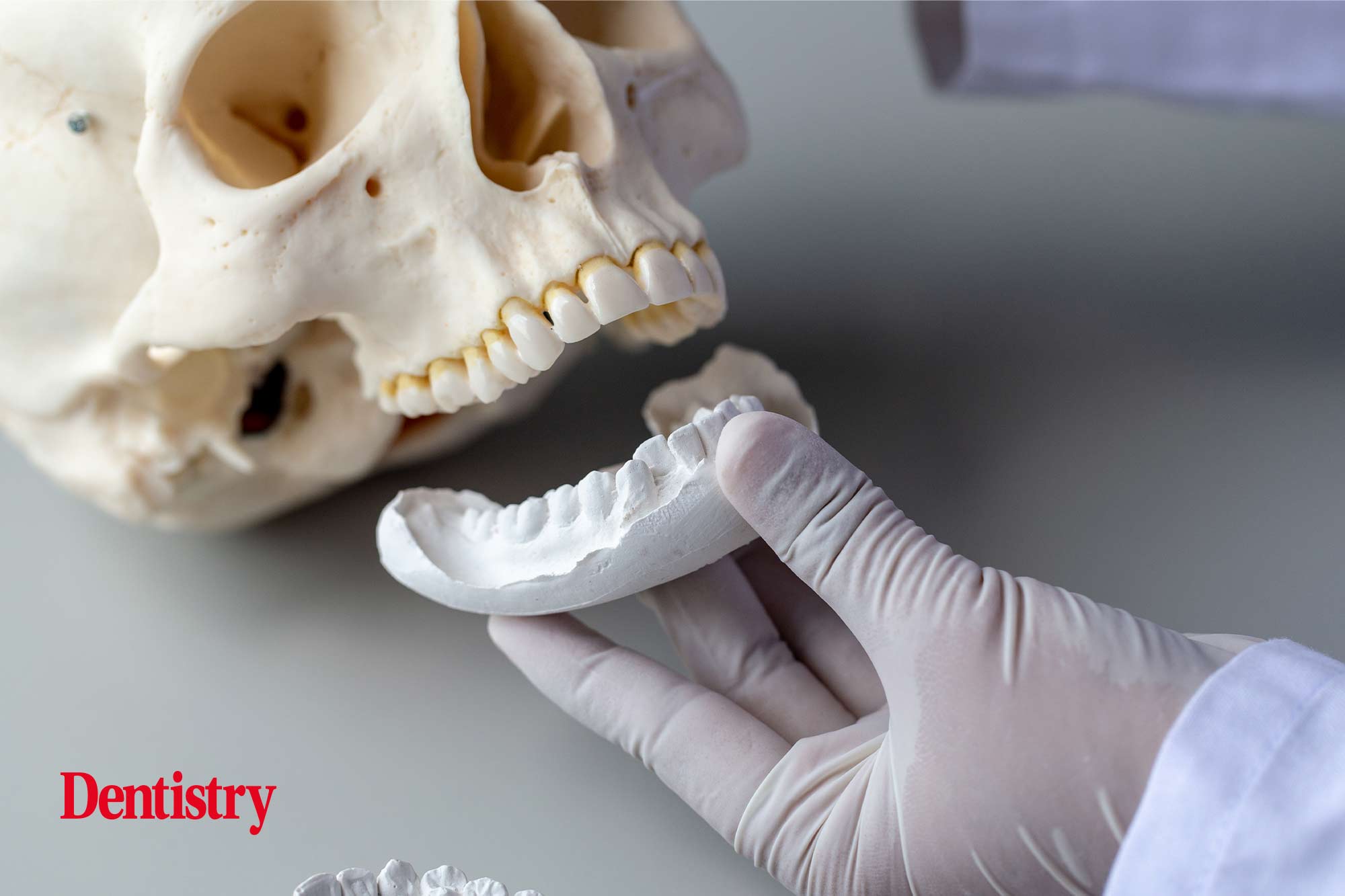 Nikhil Gogna considers anterior crossbite correction as an alternative method of treatment.
Nikhil Gogna considers anterior crossbite correction as an alternative method of treatment.
An anterior crossbite is the palatal malposition of one or more maxillary anterior teeth in relation to the mandibular anterior teeth when the teeth are in centric relation. Such an appearance can involve a single or group of teeth caused by:
- Underlying skeletal discrepancies
- Congenital absence of secondary teeth (for example, upper lateral incisors) resulting in maxillary arch constriction
- Trauma to the primary dentition, leading to the displacement of the primary or permanent tooth bud.
Why treat anterior crossbites?
Anterior crossbite corrections are usually recommended because of the potential risks they pose if left untreated. For example this includes:
- Premature tooth wear
- Periodontal issues, such as recession
- Premature contacts, leading to displacements resulting in facial asymmetry
- TMJ pain
- Psychological consequences.
What does the research tell us?
A randomised controlled trial by Wiedel and Bondemark (2015) compared fixed appliances to upper removable appliances (URAs) in treating anterior crossbites. Of the 64 patients treated in both groups, the fixed appliances were 1.4 months faster, produced greater increases in arch length and were more cost effective compared to URAs.
The same team conducted a two-year follow-up assessing stability of corrected anterior crossbites. They concluded: ‘One or more incisors can be successfully corrected by either fixed or removable appliances with similar long-term stability; thus, either type of appliance can be recommended.’
The evidence doesn’t favour one specific method. Therefore, I believe if you brought together a group of orthodontists and asked for their preference in crossbite correction, it will bring to light an old paraphrased dental analogy… ‘put 10 dentists in a room and you’ll get 10 different treatment plans!’
My preference is using fixed appliances because I have minimal concerns with compliance, no lab bill and a shorter treatment time.
I’ve always found adjusting T-springs/Z-springs a bit of a ‘faff’. Also, the irritation of retaking impressions when URAs are lost and having the lethargic and dragging conversation to an uncompliant patient about wearing the URA full time – just in one ear and out the other! As stated, this is my opinion and I’m sure there are also many orthodontists who have had a positive experience with URAs.
Anterior crossbite correction: the alternative method
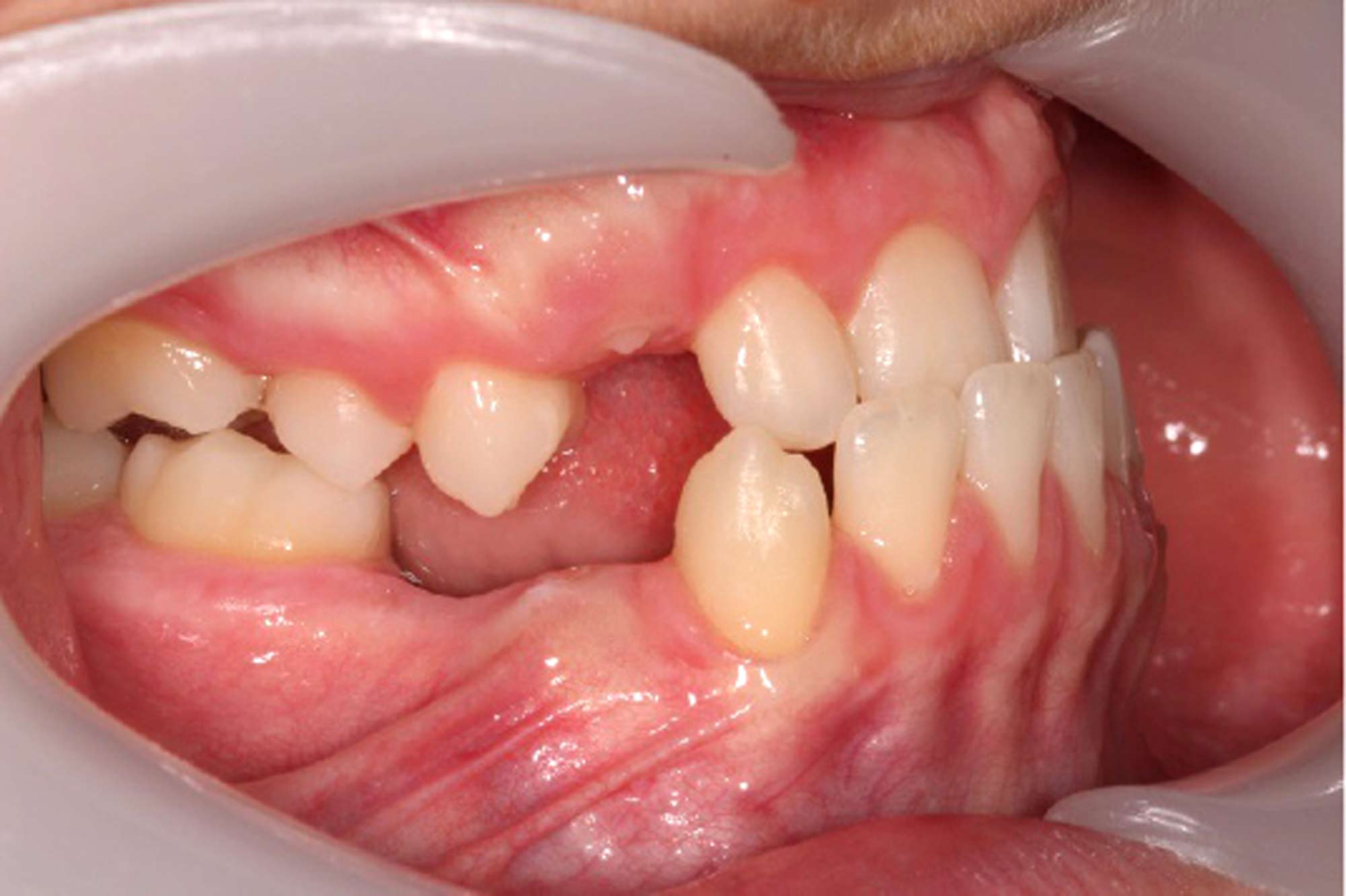
Figure 1 shows a 13-year-old patient in the late mixed dentition presenting with a class III incisal relationship complicated by an impacted UR5 and unerupted UR3.
By advancing the upper incisors, this will not only correct the anterior crossbite but will also produce space to disimpact the premolar and encourage eruption of the canine.
Figure 2 shows a two by four appliance (molar bands on the upper 6s and four brackets on the lateral and central incisors).
The wire used was a counterforce 17×25 heat-activated nickel titanium wire and engaged into the bracket slots while 2-3mm away. This provides scope for the upper incisors to advance and procline as the archwire expresses itself but can lead to upper incisor intrusion.
To prevent the wire sliding, a hook is placed onto the archwire and connected to the molar band via a ligature or powerchain. Please note that I have left excess wire distal to the tube. This is important as I reactivate the wire at the next visit.
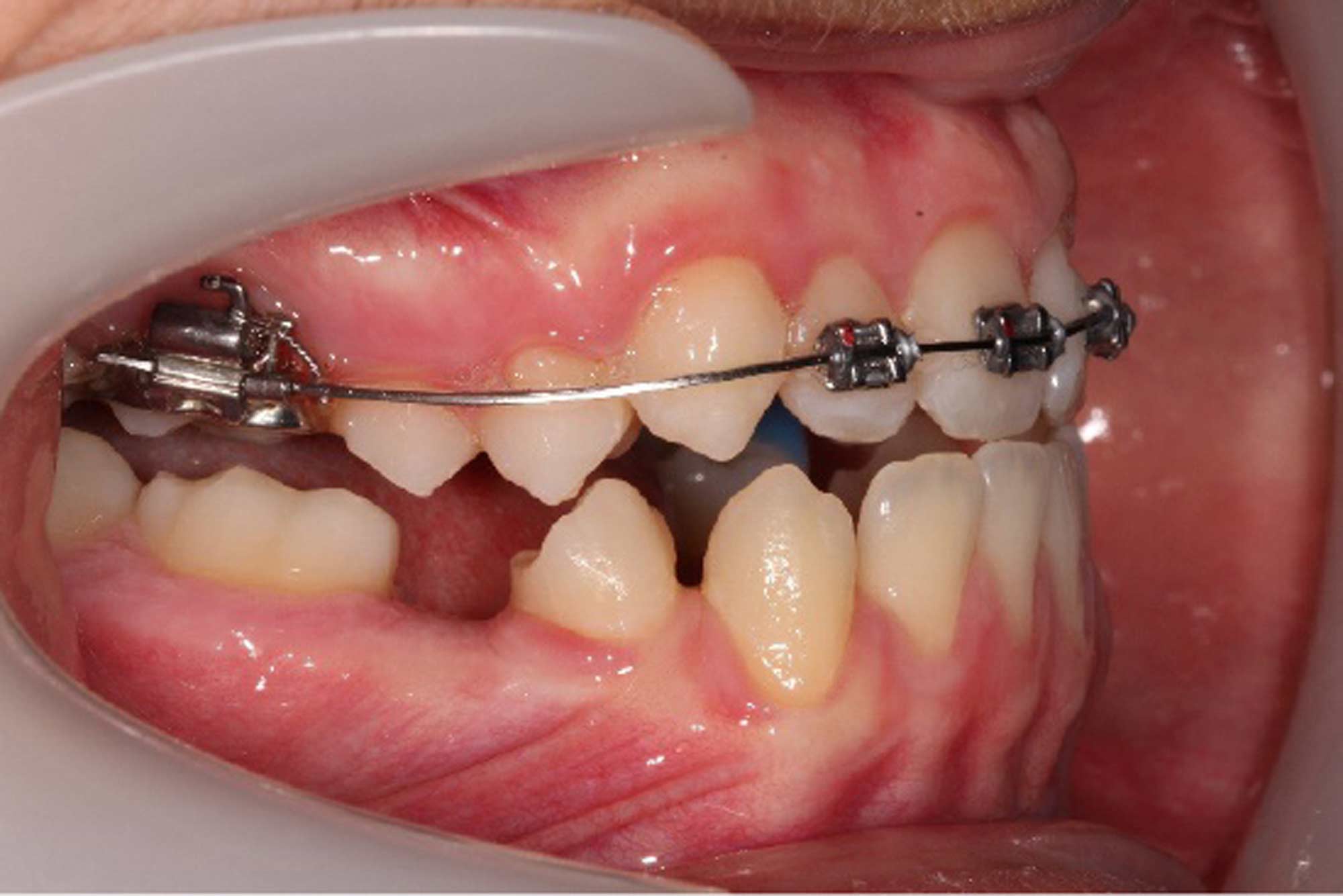
The reactivation phase
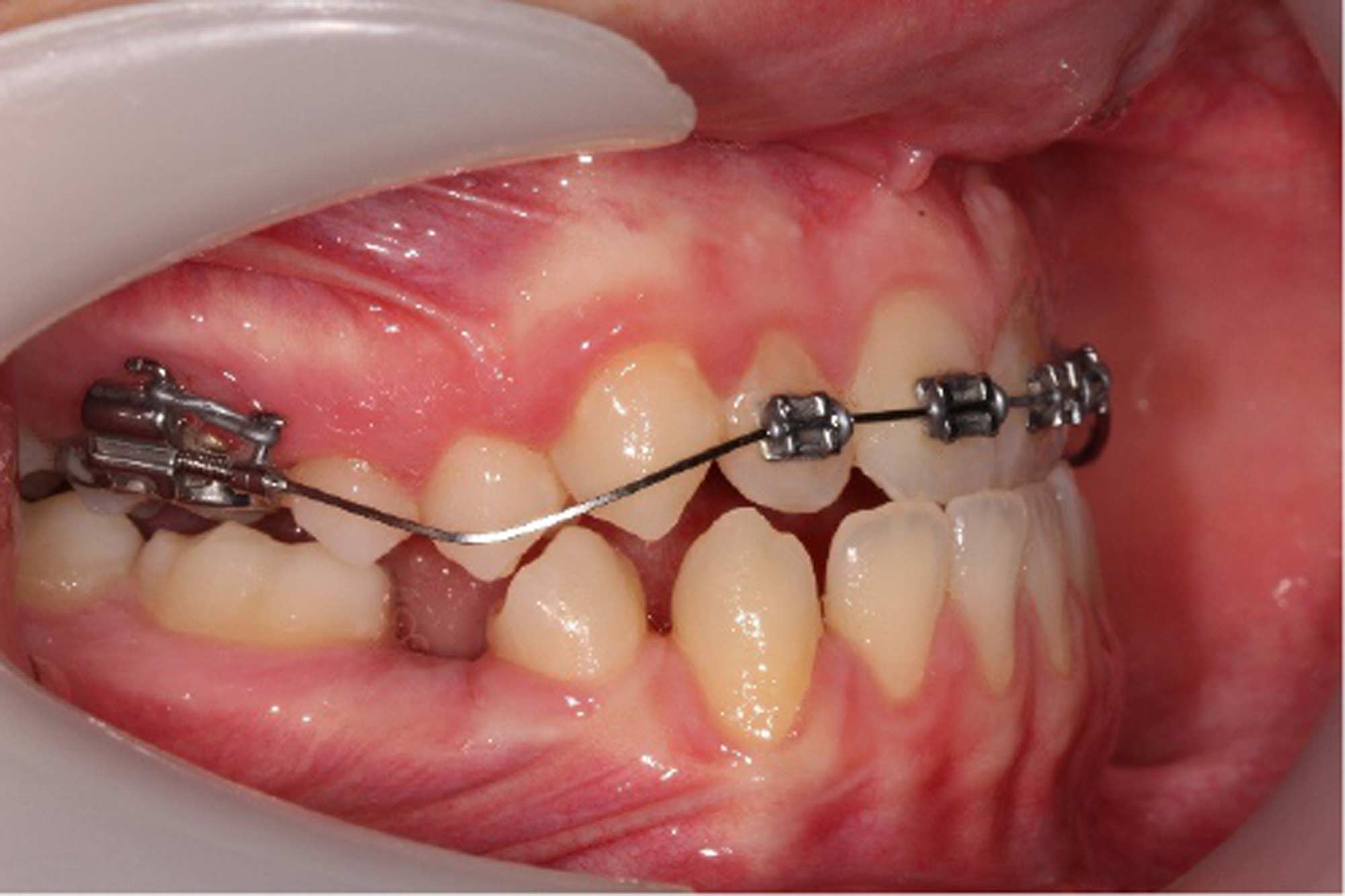
Figure 3 highlights the reactivation phase at the second appointment. The powerchain and modules are removed from the incisor brackets. This enables the wire to be brought forward by 2-3mm from the bracket slots before being re-engaged.
Dead coil is placed between the hook on the archwire and molar band. This also prevents the hook sliding towards the band. You will notice the wire is bowing because of the wire compressing – this is normal and expected.
Correction
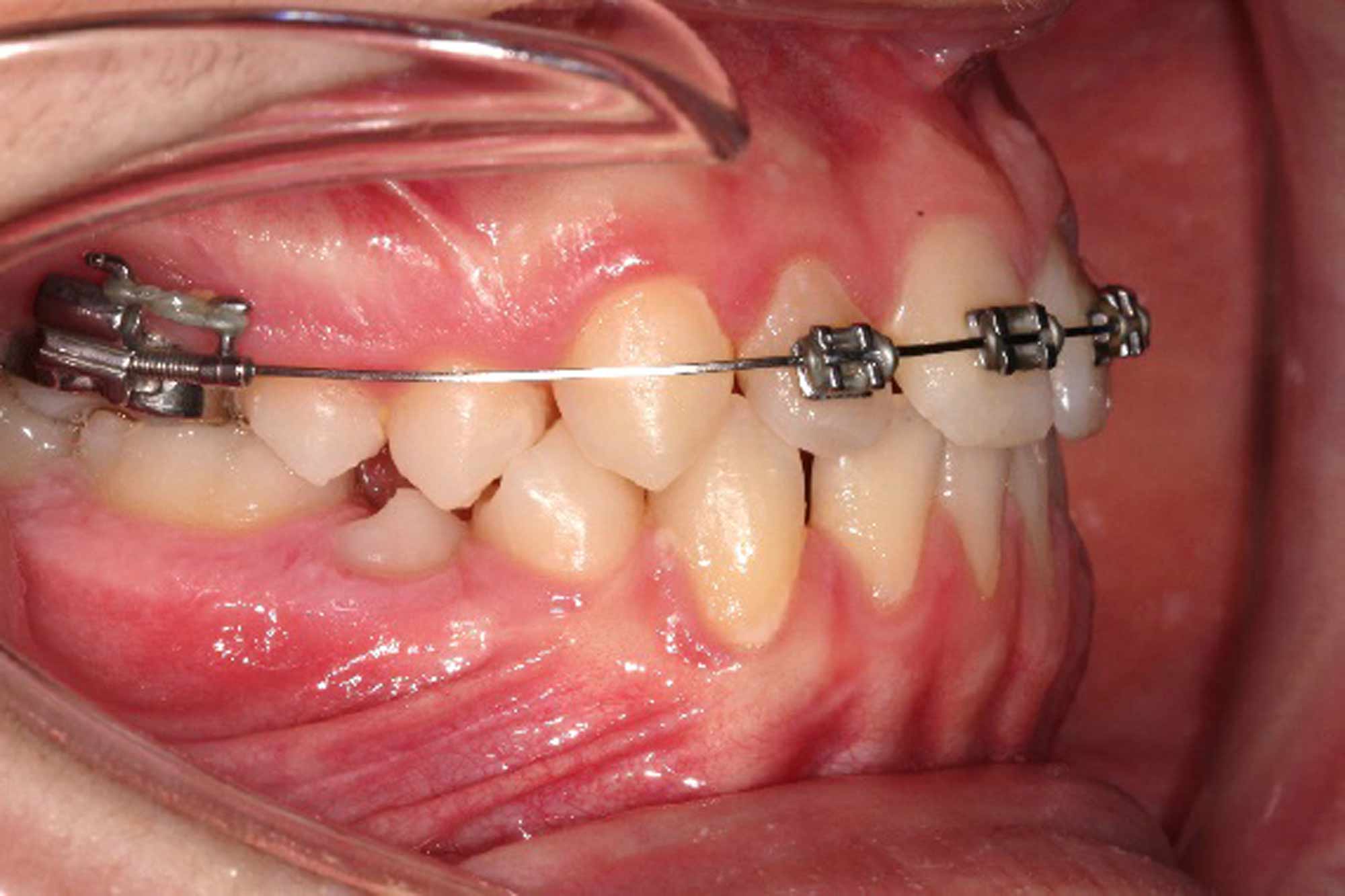
Figure 4 demonstrates anterior crossbite correction where space has been generated for the upper right premolar and canine. As the patient was in the permanent dentition, I progressed to bonding the remaining maxillary and mandibular teeth to treat on a non-extraction basis.
Figure 5 highlights the case close to completion with upper and lower 19x25ss engaged with powerchain to close residual spacing.
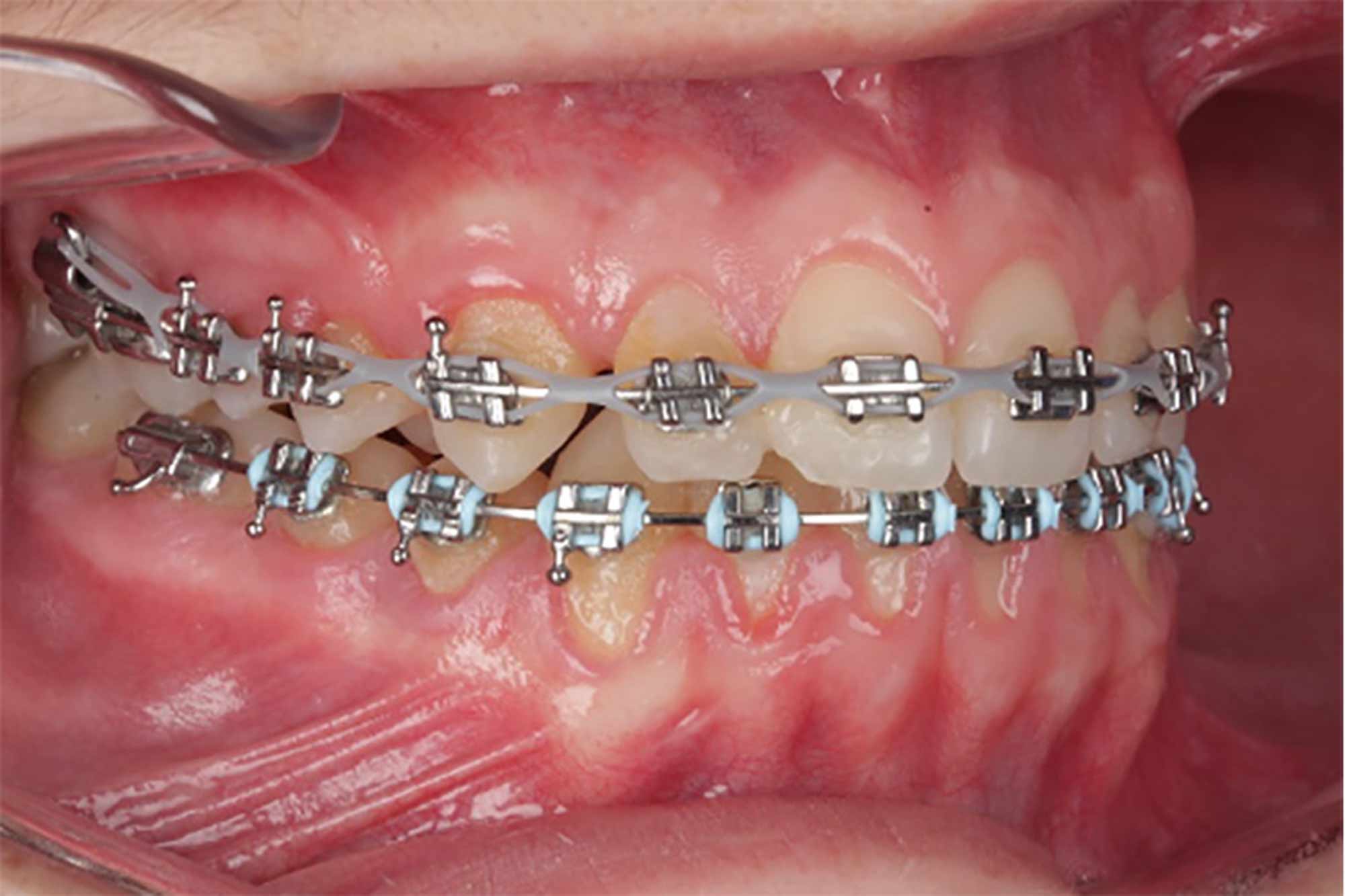
Concluding remarks
I offer an alternative method to treating anterior crossbites using a heat-activated nickel titanium wire (17×25). In total, there were three visits over a four-month period before progressing onto comprehensive treatment. Furthermore, there were no breakages or discomfort to the patient.
The disadvantages to this procedure include:
- Technique sensitivity of utilising hooks and dead coil to activate at each appointment
- Intrusive effects on the upper incisors – therefore, care must be taken to avoid this technique in reduced overbite cases.
Acknowledgment
The author would also like to thank Rognvald Linklater for his guidance on this case.
This article first appeared in Clinical Dentistry magazine. To read more articles like this, you can sign up to the magazine here.


